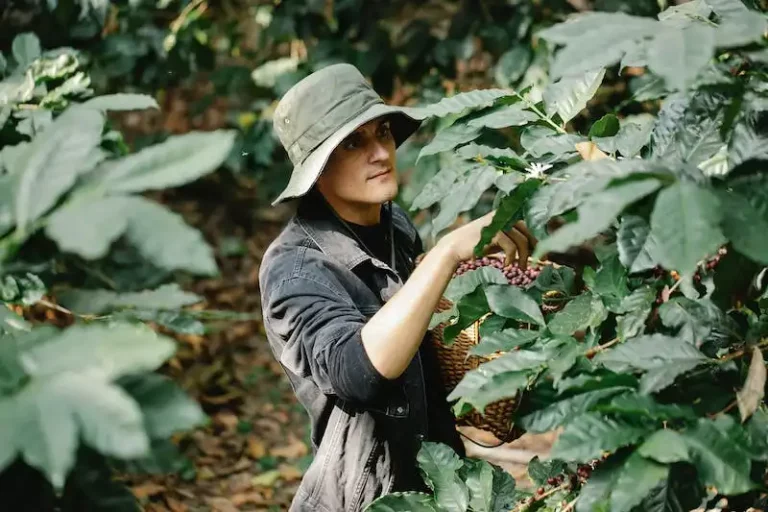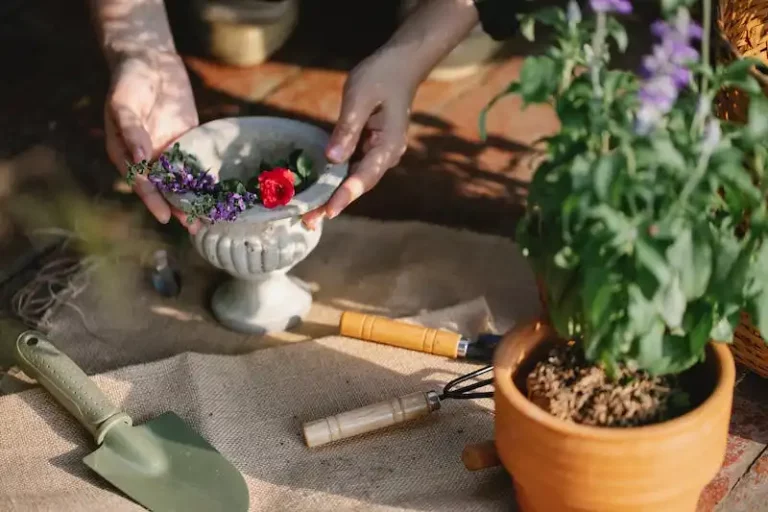If you have limited space or don’t have access to a garden, growing beans in containers is a great way to still enjoy a bountiful harvest. Whether you prefer bush or pole beans, these versatile plants can be grown almost anywhere with a little bit of care and nurturing.
Before you get started, ensure that your containers are at least 18 inches deep and have proper drainage holes. This will allow for the roots to establish themselves and ensure that the plants have enough room to grow.
When it comes to timing, beans are a warm-weather crop, so it’s best to wait until all threat of frost has passed before sowing your seeds. However, if you’re eager to get started early, you can always start your beans indoors in pots and transplant them once the weather warms up.
When sowing your seeds, create a loose and light soil mix. Beans prefer a well-draining soil, so adding perlite or vermiculite to your potting mix can help improve drainage. Simply lightly cover the seeds with soil and water them in.
As your beans start to grow, it’s important to provide them with some support. For pole beans, you can use a trellis or stake to create a structure for the plants to climb. Bush beans, on the other hand, don’t require support. Just ensure that the container is sturdy enough to keep them upright.
When it comes to pests, beans can be susceptible to aphids, slugs, and snails. To keep them under control, you can use organic pest control methods such as companion planting or introducing beneficial insects like ladybugs or lacewings. If you’re concerned about common bean viruses, always ensure that your plants are disease-resistant varieties.
Watering is essential for bean plants, especially during dry spells or hot weather. Keep the soil consistently moist, but not soaked. And don’t forget to fertilize your plants every few weeks to ensure they have enough nutrients to thrive.
With a little bit of care and attention, you’ll be able to enjoy a bountiful harvest of bush and pole beans. Whether you’re growing them for the first time or have been growing them for years, beans are an incredibly rewarding and easy-to-grow crop that will keep you eating fresh all season long.
So, don’t let limited space or lack of a garden hold you back from growing your own food. With containers, the right timing, and the right care, you can grow tons of delicious beans right on your balcony or patio.
How To Grow French Beans Dwarf
If you want to grow French beans dwarf in containers, here are some simple steps to help you produce a bountiful harvest:
- Choose a deep container for planting. French beans dwarf prefer a container that is at least 7 inches deep.
- Ensure proper drainage for your container by adding holes at the bottom.
- Fill the container with a premium potting mix or a mix of compost and garden soil.
- Sow the seeds about 2 inches deep in the soil, placing them about 4 inches apart.
- Water the seeds immediately after planting. Keep the soil consistently moist throughout the germination period.
- French beans dwarf prefer full sun, so place your container in an area that receives at least 6-8 hours of sunlight per day.
- Consider using a cloche or raised bed to provide some protection from harsh weather conditions.
- Monitor the plants for insects such as aphids and take appropriate action to control them if necessary.
- Water the plants regularly, especially during dry spells. However, avoid overwatering as this can lead to root rot.
- Harvest the beans when they are young and tender, simply by gently pulling them off the plant.
- Nurturing French beans dwarf is relatively easy, as they require minimal care compared to other vegetable plants.
Direct Sowing Dwarf French Beans
Direct sowing dwarf French beans is a great option for those who want to grow beans in containers. You can sow the seeds directly into pots or containers, eliminating the need for transplanting seedlings. Here are some tips to help you successfully direct sow dwarf French beans:
- Choose a container that is at least 4 inches in depth, as this will provide enough space for the beans to grow.
- Before sowing the seeds, make a hole in the soil or planting mix that is about 1 inch deep.
- It is possible to start the seeds indoors in pots and then transplant the seedlings, but it is recommended to directly sow the seeds into the containers or pots where they will grow.
- Plant the seeds about 7 inches apart, as this will give the plants enough space to grow and produce a good crop.
- After planting the seeds, cover them with soil or planting mix and lightly press down to ensure good contact.
- Water the seeds and keep the soil moist but not wet. Too much water can cause diseases and rotting.
- Beans are generally hardy plants and are not usually affected by pests, but aphids and blackfly insects may attack the plants. To help prevent this, you can use organic pest control methods or companion planting.
- Once the beans start to grow, they’ll fill up the container or pot and create a tight and compact area of growth.
- As the beans grow, you can provide support by using canes or trellises.
- Harvest the beans when they are young and tender for the best flavor.
Direct sowing dwarf French beans is a simple and effective way to grow beans in containers. The beans will enjoy the warmth and sunlight, and with proper care and nurturing, they’ll produce a bountiful harvest. So why not give it a try and enjoy fresh and delicious French beans right from your own patio or balcony?
Plant Care for French Beans
French beans, also known as bush beans or green beans, are a popular and rewarding vegetable to grow in containers. With proper care and attention, you can enjoy a bountiful harvest of these delicious beans.
When planting French beans, choose a firm and loose soil that drains well. Ensure that the container you use has good drainage to prevent waterlogging, as this can ruin the roots of the plants. Place the container in an area where it can receive full sunlight for at least 6 hours a day. French beans thrive in warm weather, so avoid planting them outside until the risk of frost has passed.
The first step in caring for French beans is to sow the seeds. Plant the beans about 18 inches apart and 1 inch deep in the soil. Gradually water the soil to keep it moist, but be careful not to overwater as this can lead to rotting. As the beans grow, provide support for them to climb on, such as a trellis or stakes.
While French beans are growing, it is important to provide them with proper nutrition. Apply a balanced fertilizer every few weeks to ensure healthy growth. Keep an eye out for pests such as aphids and snails. If you notice any yellow or damaged leaves, remove them promptly to prevent the spread of disease.
French beans are ready to be harvested around 12 to 14 weeks after planting. Look for beans that are firm and about 6 inches in length. Gently pick them off the plants using your hand or a trowel. The more you harvest, the more beans the plant will produce.
In cooler climates, you may consider using plastic cloches to help keep the beans warm and protect them from frost. Cloches create a mini greenhouse effect, trapping the heat and prolonging the growing season. They can be removed once the weather becomes consistently warm.
French beans are an incredibly versatile vegetable that can be enjoyed in a variety of dishes. Whether you choose to grow them in containers or directly in your garden, with proper care and attention, you can enjoy a bountiful harvest of these nutritious and flavorful beans.
How to Grow TONS of Bush and Pole Beans in Containers
Growing bush and pole beans in containers can be a great way to maximize your garden space and enjoy a bountiful harvest. Whether you have a small balcony or a large backyard, container gardening allows you to grow beans with ease. Here are some tips to help you grow tons of bush and pole beans in containers.
1. Choose the right container size: Select a container that is at least 2 feet deep and wide. This will give the roots enough space to grow and ensure that the plants have a stable surface to thrive on.
2. Use the right soil: Beans prefer well-draining soil, so mix some compost or potting soil with your garden soil. This will provide better drainage and help the beans grow healthier.
3. Plant at the right time: Beans are warm-season plants, so it’s best to start planting them in late spring or early summer. For a continuous harvest, plant a new batch of beans every 2 weeks throughout the growing season.
4. Choose the right bean variety: There are many different varieties of bush and pole beans to choose from. Some recommended varieties include ‘Provider’, ‘Blue Lake’, and ‘Kentucky Wonder’. Consider the size of your container and the desired taste to select the best bean variety for your container garden.
5. Start with seedlings: While it is possible to grow beans from seeds, starting with seedlings is the easiest way to ensure success. Plant the seedlings about 2 inches deep in the soil and leave about 4 inches between plants.
6. Provide support for pole beans: If you’re growing pole beans, provide them with a trellis or stakes for support. This will help the vines grow upwards and keep the beans off the ground, making harvesting easier.
7. Mulch your container: Mulching your container will help to retain moisture in the soil and control the growth of weeds. Use a layer of organic mulch like straw, dried leaves, or wood chips to keep your plants happy and healthy.
8. Water and fertilize regularly: Beans require regular watering. Keep the soil consistently moist, but not waterlogged. Also, fertilize your plants every few weeks with a balanced fertilizer to promote healthy growth and high yields.
9. Control pests and diseases: Beans can be susceptible to pests like blackfly, slugs, and snails. Use natural pest control methods or recommended insecticides to keep these insects at bay. Additionally, keep an eye out for any signs of diseases and take appropriate measures to control them.
10. Harvest beans regularly: Harvest your beans when they’re young and tender. Pick them frequently to encourage further production. Simply snap off the beans from the plant.
By following these steps and providing proper care for your bush and pole beans, you can enjoy a plentiful harvest throughout the growing seasons. Happy gardening!



